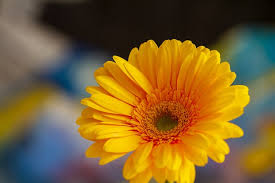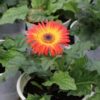**Marigolds and Clean Energy: Cultivating Sustainability and Renewable Solutions**

In the realm of sustainable development and environmental stewardship, marigold flowers emerge as symbols of resilience and innovation, inspiring the exploration and adoption of clean energy solutions that harness the power of nature to meet our growing energy needs while mitigating climate change and promoting environmental sustainability. With their vibrant colors and natural beauty, marigolds serve as ambassadors for clean energy, highlighting the potential for renewable technologies to transform our energy systems and build a brighter, more sustainable future for generations to come. Let’s delve into the intricate relationship between marigolds and clean energy, uncovering their role in cultivating sustainability and promoting the transition towards a cleaner, greener energy landscape.
**1. Renewable Energy Technologies**
Renewable energy technologies, such as solar, wind, hydro, and bioenergy, offer sustainable alternatives to fossil fuels, harnessing the natural power of the sun, wind, water, and organic matter to generate electricity, heat, and fuel without emitting greenhouse gases or harmful pollutants. These technologies play a crucial role in mitigating climate change, reducing air and water pollution, and promoting energy independence and security, while creating jobs, stimulating economic growth, and improving public health and well-being.
**2. Solar Energy: Power from the Sun**
Solar energy, derived from the sun’s rays, is one of the most abundant and widely available sources of renewable energy, offering clean, reliable, and affordable electricity generation for homes, businesses, and communities around the world. Photovoltaic (PV) solar panels, which convert sunlight into electricity, can be installed on rooftops, parking lots, and utility-scale solar farms, providing a scalable and cost-effective solution for meeting electricity demand while reducing reliance on fossil fuels and lowering carbon emissions.
**3. Wind Energy: Harnessing the Wind**
Wind energy, harnessed from the kinetic energy of the wind, is another promising source of renewable power that can be deployed onshore and offshore to generate electricity for homes, cities, and industries. Wind turbines, equipped with rotor blades that capture wind energy and convert it into rotational motion, can be installed in windy areas such as coastlines, plains, and mountain ridges, where they provide clean, reliable, and affordable electricity without consuming water or emitting air pollutants.
**4. Hydroelectric Power: Tapping into Water Resources**
Hydroelectric power, derived from the gravitational force of flowing water, is one of the oldest and most widely used forms of renewable energy, providing clean, dispatchable electricity generation from rivers, streams, and reservoirs. Hydroelectric dams and run-of-river facilities can be built to capture water flow and convert it into mechanical or electrical energy, powering homes, industries, and transportation systems while supporting water management, flood control, and irrigation needs in rural and urban areas.
**5. Bioenergy: Harnessing Organic Matter**
Bioenergy, derived from organic matter such as plants, crop residues, and animal waste, offers a versatile and renewable source of energy that can be used for heat, power, and transportation fuels. Biomass heating systems, biogas digesters, and biofuels production facilities can convert organic materials into clean, renewable energy products that reduce greenhouse gas emissions, support rural development, and promote sustainable land use practices such as agroforestry, organic farming, and waste management.
**6. Integration and Synergies**
In conclusion, marigold flowers inspire the integration and synergies of clean energy technologies and solutions that harness the power of nature to meet our energy needs while protecting the environment and promoting sustainable development. By embracing renewable energy sources such as solar, wind, hydro, and bioenergy, we can transition towards a cleaner, greener energy landscape that prioritizes environmental sustainability, economic prosperity, and social equity for all members of society.
Through research, innovation, and collaboration, we can unlock the full potential of clean energy technologies and solutions to address the interconnected challenges of climate change, energy access, and environmental degradation, while building resilient and inclusive communities that thrive in harmony with nature. By incorporating marigold flowers into clean energy projects, educational programs, and public awareness campaigns, we can celebrate the beauty and utility of renewable energy while inspiring people around the world to embrace sustainable living and contribute to a more sustainable and prosperous future for generations to come.

